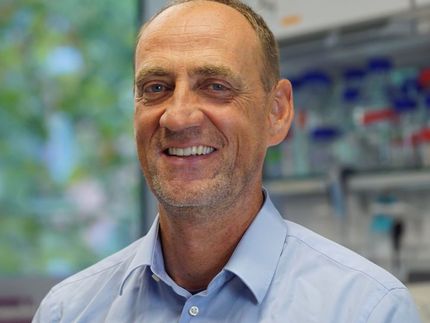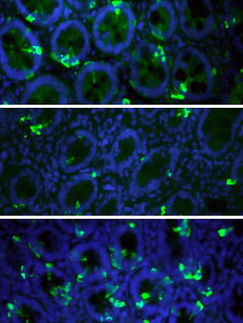Scientists find brown fat master switch
Mouse study could lead to novel treatment for obesity in humans
Researchers at Dana-Farber Cancer Institute have identified a long-sought "master switch" in mice for the production of brown fat, a type of adipose tissue that generates heat and counters obesity caused by overeating.
A team headed by Bruce Spiegelman, PhD, suggests in the July issue of Cell Metabolism that turning up the equivalent switch in people might be a new strategy for treating overweight and obesity. The investigators said their next step is to rev up the control in mice and overfeed them to see if they are resistant to becoming obese.
"Brown fat is present in mice and in human infants, where it keeps them warm by dissipating food energy as heat, instead of storing it as white fat," said Spiegelman, senior author of the paper. "Human adults don't have much brown fat, but there is some, and from a therapeutic perspective the question is whether that pathway can be reactivated."
The pathway, according to the new report, is controlled by a gene and protein known as PRDM16 that is found in brown but not in white fat - the type that stores excess calories and causes waistlines to bulge.
In some of the mouse experiments, the Dana-Farber investigators inserted PRDM16 genes into precursors of white fat, and implanted the white fat precursors under the skin of the animals. The PRDM16 gene coaxed those cells to generate brown fat cells. "These results illustrate that the gene we identified can turn on a broad program of brown fat cell development when we insert it into precursors that otherwise would produce white fat," Spiegelman added. Lead author on the paper is Patrick Seale, PhD, in the Spiegelman lab.
Further analysis showed that PRDM16 triggered formation of brown fat cells in part by turning on a metabolic pathway controlled by PGC-1alpha, which was discovered in Spiegelman's lab, and the gene UCP1, which allows cells to release large amounts of energy as heat.
If continued research demonstrates that engineering fat precursor cells with PRDM16 and implanting them in mice works as an obesity preventive, the investigators say a similar intervention is theoretically possible in people. "You might not have to implant a large amount of engineered precursors in people who are at risk for being obese," said Spiegelman, who is also a professor of cell biology at Harvard Medical School. "In theory, you would only have to reduce the accumulation of white fat by 1 percent or so to have an effect."
Other authors of the report are from Dana-Farber and Harvard Medical School, and laboratories in Toulouse, France.
Organizations
Other news from the department science
These products might interest you

Whatman™ folded filter papers by Cytiva
Whatman folded filter papers
Convenient folded formats speed up your sample preparation

Systec H-Series by Systec
Safe, reproducible and validatable sterilization of liquids, solids and waste
Autoclaves with 65-1580 liters usable space, flexibly expandable for various applications

Get the life science industry in your inbox
By submitting this form you agree that LUMITOS AG will send you the newsletter(s) selected above by email. Your data will not be passed on to third parties. Your data will be stored and processed in accordance with our data protection regulations. LUMITOS may contact you by email for the purpose of advertising or market and opinion surveys. You can revoke your consent at any time without giving reasons to LUMITOS AG, Ernst-Augustin-Str. 2, 12489 Berlin, Germany or by e-mail at revoke@lumitos.com with effect for the future. In addition, each email contains a link to unsubscribe from the corresponding newsletter.





















































